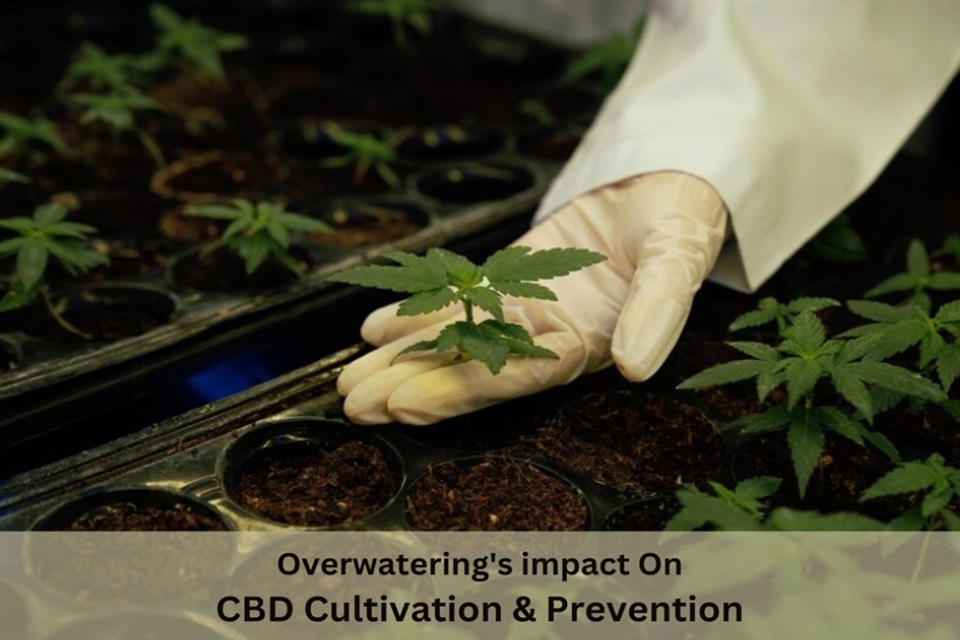Understanding The Impact Of Overwatering In CBD Cultivation
Cannabidiol (CBD) cultivation has surged in popularity due to the increasing demand for CBD-infused products. However, successful cultivation requires careful attention to various factors, including watering practices. Overwatering is a common issue that can have significant implications for CBD plant health and yield. In this article, we’ll delve into the effects of overwatering on CBD cultivation and explore strategies to mitigate its impact.
The Importance Of Proper Watering
Water is essential for plant growth, playing a crucial role in nutrient transportation, photosynthesis, and cell structure maintenance. However, excessive watering can disrupt these processes, leading to adverse effects on plant health.
Effects Of Overwatering On CBD Plants:
- Root Rot: One of the most severe consequences of overwatering is root rot. Excess moisture in the soil creates anaerobic conditions, depriving the roots of oxygen and promoting the growth of harmful pathogens like Pythium and Phytophthora. As a result, the roots become waterlogged, turn brown, and begin to decay. This compromises the plant’s ability to absorb water and nutrients, ultimately stunting growth and reducing yield.
- Nutrient Imbalance: Overwatering leaches essential nutrients from the soil, disrupting the delicate balance required for healthy plant development. Nutrient deficiencies or imbalances can manifest as yellowing leaves, poor flowering, and diminished cannabinoid production in CBD plants.
- Reduced Resilience: CBD plants subjected to overwatering are more susceptible to stress and pest infestations. Weakened root systems and nutrient imbalances compromise the plant’s ability to defend against environmental stressors, making it more vulnerable to disease and pest attacks.
Mitigating The Impact Of Overwatering:
- Proper Drainage: Ensure that containers or growing beds have adequate drainage to prevent water from pooling around the roots. Use well-draining soil mixes and consider adding perlite or vermiculite to improve soil structure.
- Monitoring Moisture Levels: Regularly monitor soil moisture levels using a moisture meter or by manually checking soil texture. Allow the top inch or two of soil to dry out between watering sessions to prevent overwatering.
- Adjusting Watering Frequency: Tailor watering frequency to environmental conditions and plant needs. Factors such as temperature, humidity, and plant size influence water requirements. Avoid watering on a fixed schedule and instead assess the moisture needs of each plant individually.
- Implementing Mulching: Applying organic mulch around CBD plants conserves soil moisture, regulates temperature, and reduces water evaporation. It also suppresses weed growth, promoting a healthier growing environment.
Conclusion
Overwatering poses significant challenges to successful CBD cultivation, jeopardizing plant health and reducing yield potential. By understanding the effects of overwatering and implementing appropriate watering practices, cultivators can safeguard their CBD crops and maximize harvest quality and quantity. Through careful monitoring, proper drainage, and adjustments to watering frequency, growers can mitigate the impact of overwatering and cultivate thriving CBD plants.
FAQs
- How do I know if I’m overwatering my CBD plants?
Signs of overwatering in CBD plants include wilting despite moist soil, yellowing or browning leaves, stunted growth, and a foul odor emanating from the soil.
- What should I do if I suspect my CBD plants are being overwatered?
If you suspect overwatering, take immediate action to rectify the situation. Allow the soil to dry out by reducing watering frequency and ensuring proper drainage. Consider repotting the plant in well-draining soil and trimming any damaged or rotting roots.
- Can overwatering impact the potency of CBD in my plants?
Yes, overwatering can indirectly affect the potency of CBD in plants by disrupting nutrient uptake and hindering overall plant health. Nutrient imbalances and stress caused by overwatering may result in reduced cannabinoid production.
- How can I prevent overwatering in my CBD cultivation?
Using well-draining soil mixes and incorporating materials like perlite or vermiculite ensures proper drainage in containers or growing beds. Monitor soil moisture levels regularly and adjust watering frequency based on plant needs and environmental conditions. Implementing mulching around the base of plants can also help retain soil moisture and regulate water uptake.





